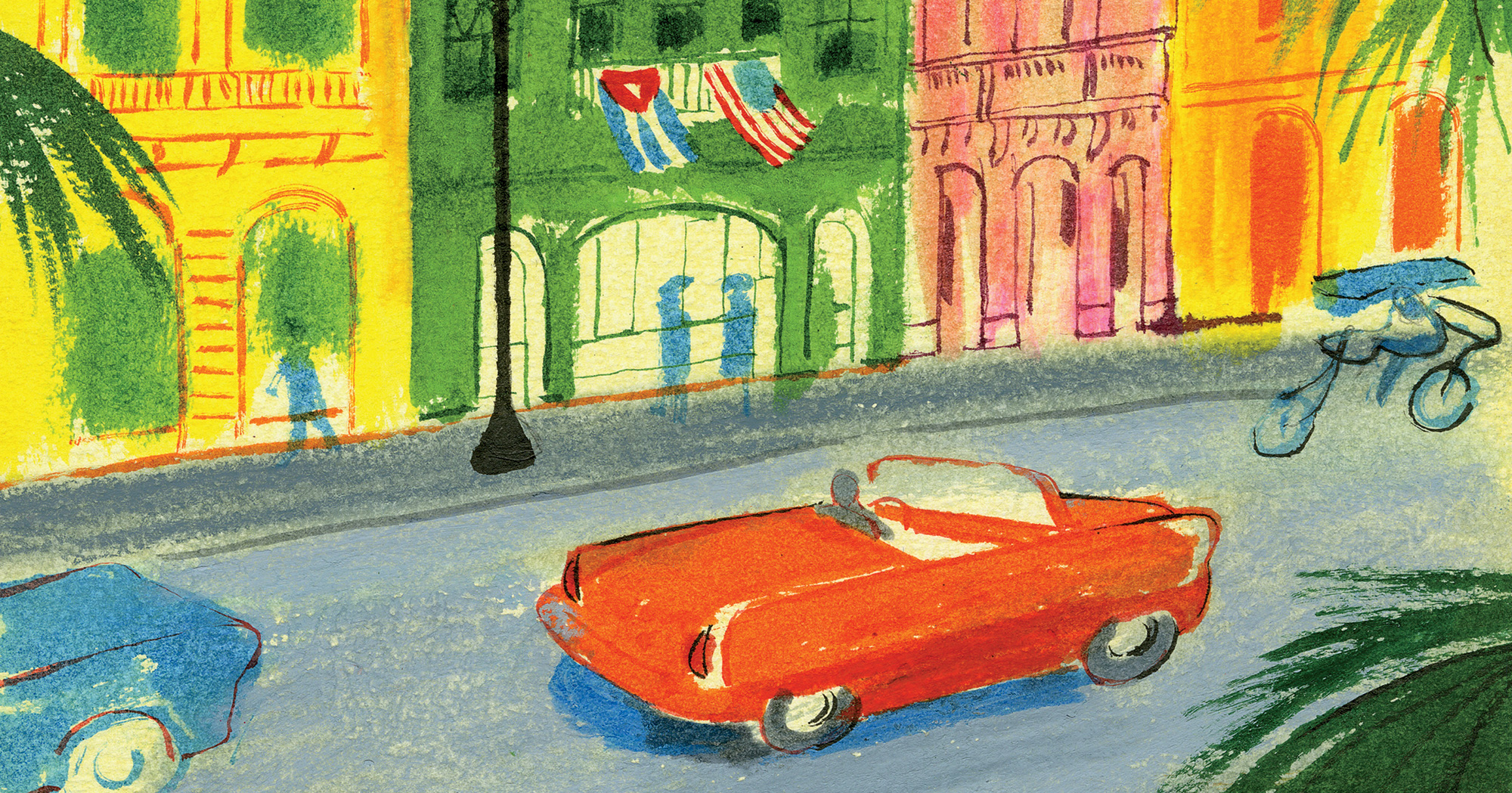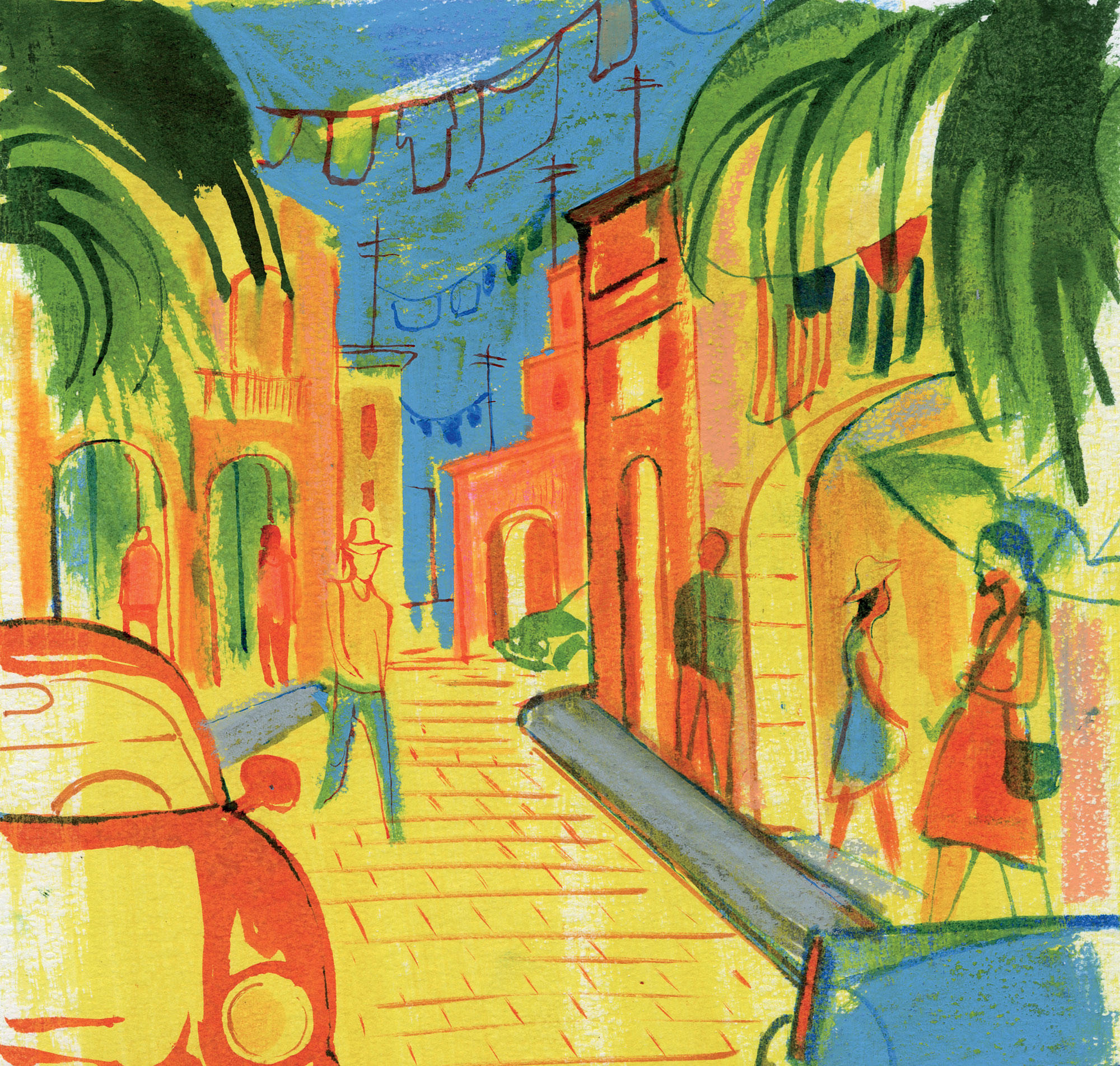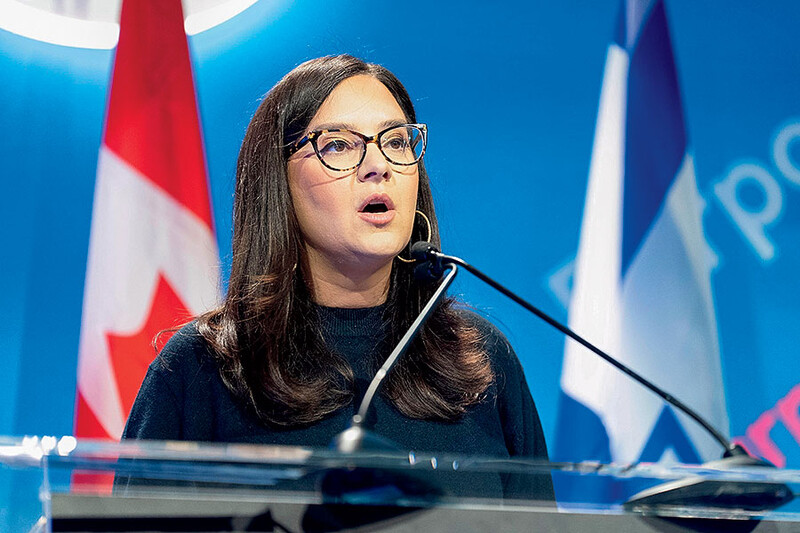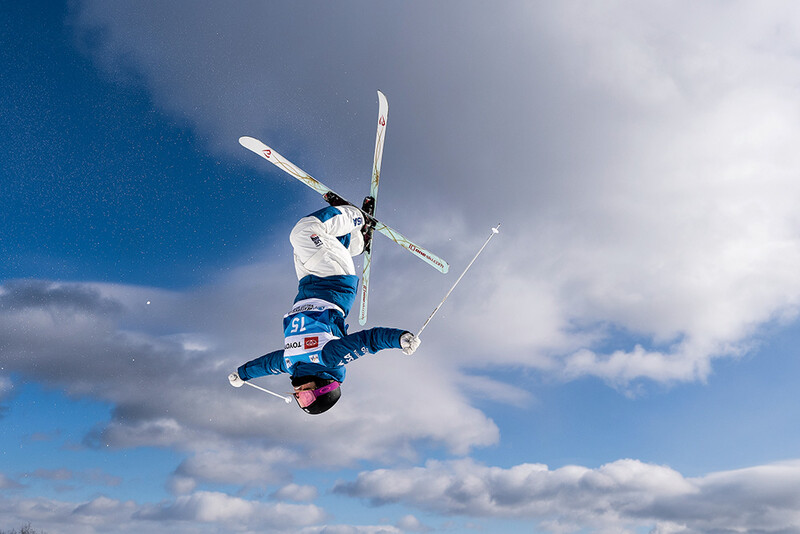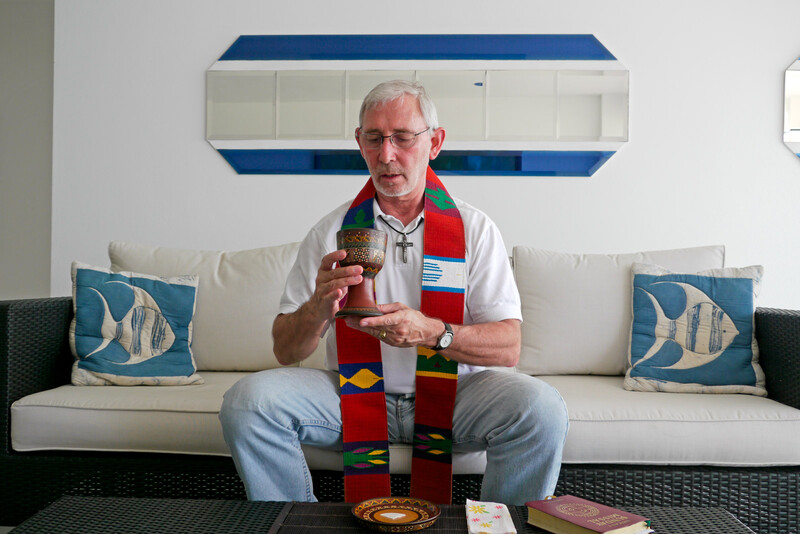As a light rain fell on José Martí International Airport in Havana, the Boeing VC-25 aircraft appeared against a battleship-gray sky. The plane got closer, and the words on the fuselage became visible: UNITED STATES OF AMERICA.
Air Force One touched down on the runway, taxied, and stopped. The door opened, and the president of the United States, Barack Obama ’83CC, emerged at the top of the stairs. He snapped open a black umbrella and disembarked with his wife, Michelle; their two daughters, Sasha and Malia; and Michelle’s mother, Marian.
It was March 20, 2016. Not since 1928, when the USS Texas carried Calvin Coolidge a hundred miles from Key West to Havana, had a sitting US president come to Cuba.
Obama stepped onto the tarmac, and a line of Cuban and American officials welcomed him. “Hi, Jeff. Good to see you. How are you?” Obama said, shaking hands with Jeffrey DeLaurentis ’78SIPA, the chargé d’affaires at the US embassy in Havana and the top US diplomat in Cuba.
An hour later, DeLaurentis stood on a podium beside the president in the Meliá Habana hotel. DeLaurentis had first been sent to Cuba twenty-five years earlier, during the worst economic disaster to ever hit the Communist-led country. Now, in a scene he could not have imagined then, he was in Havana introducing three hundred US embassy employees and their families to the president of the United States.
“Mr. President,” he said, “this is your embassy team, Americans and Cubans, and they want to say thank you for giving them the opportunity to live history.”
Angela Mestre, a Columbia College junior, was living two histories that rainy day in Havana. As President Obama’s motorcade crept along the highway beside the Malecón, the seawall esplanade that skirts the Straits of Florida, Mestre watched it go by. The whole city was watching: people lined the streets or leaned out over their flaking balconies to glimpse a leader who, Mestre says, “of all US presidents is the most relatable to Latin American and Caribbean people. There’s real affection for Obama. People love him.”
Mestre was one of four Columbia students who were spending the spring semester in Cuba through the Consortium for Advanced Studies Abroad (CASA), an eight-university collaboration that gives college juniors access to the University of Havana and Casa de Las Américas, Cuba’s leading center for Latin American studies. As another Columbia student, Caleb Murray-Bozeman, puts it, “The classes are great” — he studied Cuban cinema and Latin American thought and took Tendencies of Contemporary Capitalism (“not as propagandistic as I’d expected”) — “but the focus of the program really isn’t on the coursework. It’s to get us out into Havana to experience Cuban culture.”
For Mestre, the decision to go to Cuba was fraught. Both her parents are Cuban-American. Her mother was born in Bogotá, Colombia, to Cuban parents, and her father was born in Cuba but left in the early 1970s. Mestre was the first in her family to return to the island, and the older generations were torn. “The emotional component, the identity issues, are very complicated,” says Mestre. “It’s difficult to consider that somebody you love would go back to a country that you feel ousted you.”
Mestre was raised on stories of the lost paradise of the 1950s: the one-movie-theater town where her father grew up; the houses and mansions; the vibrant Havana life. “To see the remnants, the ghosts of these stories, is really cool, but of course there have been monumental changes in the past sixty years,” Mestre says.
Obama’s visit was one of them. In the days before his arrival, some buildings, their pink and blue arcades long sunk into a peeling grandeur, had been slapped with fresh coats of paint, and stores (most are state-run) were closed (Murray-Bozeman heard that this was because the Cuban government, sensitive to Soviet-era imagery, didn’t want the Americans to see any lines). There was a buzz, a flutter, a high anticipation mixed with uncertainty.
“People are excited that things are opening up,” says Mestre, “but also apprehensive. The challenge for society is that once the country opens up, it becomes exposed and vulnerable to being overrun. There’s rarely been a country where every remedy is such a double-edged sword.”
Three weeks after Obama’s visit, Jeffrey DeLaurentis, wearing a light-blue seersucker suit, sits in a cushioned chair in his office at the US embassy in Havana, a concrete and glass box built in 1953 in the International Style. The building sits in modest atmospheric isolation on the edge of the Vedado neighborhood, overlooking the Malecón and the sea.
DeLaurentis had joined the Foreign Service with visions of Prague and Budapest dancing in his head. But the world had other plans. In 1991, Cuba, crippled by the collapse of the Soviet Union, suffered food shortages and blackouts, and DeLaurentis was dispatched to the US Interests Section in Havana, a consular niche set up in the 1970s in lieu of formal relations and based in the erstwhile US embassy building. There, he served as vice consul, processing visas and managing the refugee program. He left in 1993 and returned in 1999 for three years as the political-economic section chief. He never did get to the Danube. His latest Cuba tour began in August 2014.
Now, as head of the US embassy in Havana (the title “chargé d’affaires” is an interim designation until an ambassador is nominated and confirmed), DeLaurentis recounts one of the more sensitive diplomatic forays of the post-Cold War era.
“When President Obama came into office, in 2009, the administration made some initial changes to facilitate more travel to Cuba, more remittances, more people-to-people contact,” he says. “But efforts to develop a different approach with Cuba really came to a halt in December 2009 after the unfair — and unjustifiable — incarceration of Alan Gross, the development worker.” Gross, a contractor with USAID, was imprisoned for smuggling illegal Internet equipment to Cuban civilians.
In 2013, the US and Cuba began secret negotiations in Canada, with the backing of Pope Francis, resulting in an exchange of intelligence officers. “The Cubans also agreed to release Alan Gross as a humanitarian gesture, free fifty-three political prisoners, look at increased Internet access, and engage with the Red Cross and other international organizations,” DeLaurentis says. “And President Obama announced our decision to do a full and scrupulous review of Cuba’s place on the State Department’s terrorist list.” (That review, which was completed in April 2015, found that Cuba should be taken off.)
Finally, on December 17, 2014, Obama and Cuban president Raúl Castro addressed their nations. “We are taking steps to increase travel, commerce, and the flow of information to and from Cuba,” Obama said. “This is fundamentally about freedom and openness, and also expresses my belief in the power of people-to-people engagement.”
DeLaurentis was in Havana that day. He could feel, in the streets, a palpable excitement. People stopped whatever they were doing to hear Castro. “Today, despite the difficulties,” the Cuban president said, “we have embarked on the task of updating our economic model in order to build a prosperous and sustainable socialism.” Cuban and American flags were draped over balconies, and church bells rang in Old Havana.
Eight months later, on August 14, 2015, DeLaurentis stood with Secretary of State John Kerry outside the US embassy building. A crowd of Cubans and Americans watched as Marine guards unfolded a US flag and hooked it to a flagpole’s halyard; as the colors scurried up, cheers broke out, and an Army band played “The Star-Spangled Banner.” The US Interests Section was now the US embassy.
Then, this past March, inside the Grand Theater of Havana, DeLaurentis listened as Obama spoke to a select audience of Cubans and Americans. “I have come here,” Obama said, “to bury the last remnant of the Cold War in the Americas.”
But on matters of democratization and freedom of expression — central disputes between the two governments — DeLaurentis counsels patience. “We’re not going to see progress overnight,” he says.
Margaret Crahan ’67GSAS first went to Cuba in 1973 for academic research. “People from the US in Cuba were scarce as hen’s teeth,” she says. “It was very unusual for Americans to get a visa to do research in Cuba.” Crahan’s subject was pre-1959 cultural penetration in Cuba by US Protestant religions — a topic deemed sufficiently benign that Crahan got her visa extended by a month. Her fascination with the country only grew: she has been back more than sixty times.
In 2009, Crahan, a senior research scholar at the Institute of Latin American Studies (ILAS) at Columbia’s Graduate School of Arts and Sciences, started a program to foster the academic exchange of Cuban and US-based scholars. She called it, in her no-nonsense way, the Cuba Program. At the time, she and John Coatsworth, the former dean of SIPA and now Columbia’s provost, could joke that they were the only Cuba specialists at Columbia (Coatsworth first went to Cuba in 1963, in violation of a US travel ban that was later found to be unconstitutional). Now the Cuba field was exploding.
While CASA caters to undergraduates, the Cuba Program assists working academics, advising scholars in the US who are traveling to Cuba for educational purposes, and — its main thrust — covering the research and living expenses for Cuban scholars pursuing projects in the US, with Columbia as their home base. “The demands on Cuban academics in Cuba are enormous,” Crahan says. “They’re teaching, doing administration, doing service to the government and the community; it’s very difficult for them to get research time. We offer them a semester to work on their own research in the US.”
Much of that research focuses on current socioeconomic issues in Cuba, especially in the non-state sector (tens of thousands of small businesses, such as restaurants, are now semi-private). “This is where the problems are going to be,” says Crahan. “The majority of Cuba’s workforce works for the state, so managing a semi-private enterprise is a challenge.” The Cuba Program has brought in Cuban economists, Cuban management experts, Cuban political scientists, Cuban entrepreneurs, even a Cuban blogger. In return, Crahan makes one request: that scholars give a talk at ILAS, open to the public.
Says Coatsworth, “There have been two groups in American society that have systematically sought to undermine the embargo and the ban on travel. One group is tourists. The other is academics. What Meg Crahan is doing is part of a tradition of keeping ideas flowing and people moving in ways that have prevented Cuba and the US from being entirely isolated from each other for the past sixty years.”
The big driver of that isolation, of course, has been the fifty-six-year-old US economic embargo, which forbids tourism and trade. “The US embargo against Cuba is a real anomaly in US foreign policy,” says Christopher Sabatini, who teaches Latin American political economy and US foreign policy at SIPA. “There’s never been a democratic transition in a country under an embargo as tight as the one we have on Cuba.”
In October 1960, President Dwight D. Eisenhower, responding to Cuba’s seizure and nationalization of American-owned properties and businesses, cut off US exports to Cuba; and in January 1961, with Havana turning to Moscow for aid, he severed diplomatic ties and closed the US embassy. A year later, President John F. Kennedy expanded the trade embargo “to include all imports from Cuba, effectively cutting off the Cuban economy from the US market,” Sabatini says.
The sanctions remained in place and have since been strengthened by legislation. The Obama White House, unable to lift the embargo unilaterally, has sought advice from a number of experts, including Sabatini and younger, more moderate Cuban-Americans, on how best to legally chip away at the embargo without having to go to a divided Congress.
“The president cannot allow for unfettered tourism to the island, or for unfettered investment and commerce with the Cuban state,” Sabatini says. “But there are things that can be legally justified if you can argue they’re helping the Cuban people: travel to the island under the twelve approved categories announced in 2014, cell-phone service, direct mail, academic and cultural exchanges, professional delegations — Obama has argued that all this is benefiting the Cuban people.”
DeLaurentis, too, advocates engagement over isolation: from his vantage at the embassy in Havana, as 1950s tail-finned automobiles of turquoise and lipstick red cruise the coastal highway, the chargé d’affaires leaves no doubt as to the political temperature. “The president has made it clear,” he says, “that the embargo should be lifted. But that is up to Congress.”
On April 21, 1959, a bearded man of thirty-two, dressed in olive-drab fatigues and a field cap, stepped onto Columbia’s College Walk. Surrounding him were police, city officials, and a few men similarly bearded and dressed for guerrilla activity. A rapturous crowd lined his path. As the world’s most famous revolutionary and the new leader of Cuba, Fidel Castro was a socialist-flavored political Elvis.
Castro was on his way to the Graduate School of Journalism to give a press conference. As he passed Low Library, he might have seen, on the steps, the bronze statue of Alma Mater and done a double take — for the steps and the sculpture were almost identical to those at the University of Havana, where he had studied law. Maybe he knew (history buff that he was) that the Havana statue’s sculptor, Mario Korbel, had been inspired by Columbia’s campus while living in New York. Maybe he knew, too, that Columbia’s journalism school was founded by the newspaper publisher Joseph Pulitzer, whose New York World, with its lurid accounts of Spanish cruelty in rebellious Cuba, whipped up support for US intervention on the island and the Spanish-American War.
Once inside the journalism building, Castro met Grayson Kirk, Columbia’s president. According to the Spectator, Kirk “greeted the Cuban leader with warm comments about the many Cubans who have studied at Columbia.” Such a list would have to begin with Gonzalo de Quesada 1890CC, who, with Cuban national hero José Martí — both men were exiles living in New York — drew up instructions for the start of Cuba’s war of independence. (Martí, weeks before his battlefield death in 1895, named Quesada his literary executor; Quesada later became Cuba’s first minister to Washington.) Kirk could have also mentioned former student Jorge Zayas, who was editor, at that moment, of the Havana newspaper Avance.
There were, of course, other Columbians with Cuban ties, though it was the better part of discretion to elide mention of Nicholas Murray Butler, Columbia’s president from 1901 to 1945, who strongly supported the 1901 Platt Amendment, a proviso in the first Cuban constitution that gave the US a naval base at Guantánamo Bay and the right to intervene at will in Cuban affairs; or John L. O’Sullivan 1831CC, a journalist who coined the term “manifest destiny,” and who, in 1848, talked President James K. Polk into offering to buy Cuba from Spain for $100 million. (Spain declined.)
But this was 1959, and if one alumnus flickered in Castro’s mind, it was Herbert Matthews ’22CC, the New York Times reporter. In 1957, Matthews, amid rumors fanned by Cuban dictator Fulgencio Batista that the rebel leader Castro was dead, made his way to a remote encampment in the Sierra Maestra mountains in southeastern Cuba and found journalistic gold. “This is the first sure news that Castro is still alive and still in Cuba,” Matthews famously wrote. “No one connected with the outside world, let alone with the press, has seen Señor Castro except this writer.” Castro credited Matthews’s flattering articles with helping to bring him to power.
Perhaps Kirk had read the Matthews pieces. In his remarks, as reported by the Spectator, Kirk “expressed the opinion that Cuba ‘will become one of the great democracies of the Western hemisphere.’”
Castro spoke to the press and met with students. Eight months later, in Havana, Jorge Zayas, his newspaper censored and attacked as “counterrevolutionary,” walked into the Ecuadorean embassy and asked for diplomatic asylum.
The Obamas weren’t the only American family on holiday in Cuba in March. Olivia Nutter, a Columbia urban-studies major in the CASA program, was heading back from the beach with her parents when Obama landed. Her father, Michael Nutter, had recently finished his second term as mayor of Philadelphia and was now teaching urban policy at SIPA.
Nutter had chosen Havana because she wanted total Spanish immersion, and also because, from an American perspective, the city held the allure of the unknown. In the end, her social experience in Cuba could be summed up in a single word: complicado.
“There is a lot of dogma and propaganda in the education system, and I think a lot of people struggle to think beyond that in the classroom,” Nutter says. To her surprise, conversations about race (Nutter is Black) and colorism were extremely limited. “To even talk about racism was deemed divisive after Fidel Castro declared it abolished in 1961,” Nutter explains. “An entire generation grew up never talking about race. There are problems with race in Cuba, but if you ask questions, it doesn’t go over well. People are not taught to question societal norms. It’s a social thing: you just don’t go there. In my class on Afro-Caribbean studies, I learned more from the silence.”
Most of her contact was with Cuban university students, whom she found to be politically self-aware, resigned to the everyday inefficiencies (“That’s Cuba” was a familiar refrain), and guarded about the future. “They understand that their opportunities are limited, and that not everything the government says is true,” Nutter says. “They don’t see things changing politically with any immediacy, but they always have hope.”
Nutter keeps in touch with her Cuban friends through Facebook (Cubans can buy Internet time from the government, but it’s costly). One recent exchange in particular struck her. She was chatting with an Afro-Cuban friend about racial problems in the US and in Cuba. “Yes,” the friend wrote, “but you have a lot more power to change your country than we do ours.”
“Cultivo una rosa blanca,” President Obama began, and the audience applauded the reference. “In his most famous poem,” said Obama, “José Martí made this offering of friendship and peace to both his friend and his enemy. Today, as the president of the United States of America, I offer the Cuban people el saludo de paz.”
It was the morning of March 22, 2016, and Ana Maria Dopico ’00GSAS, a professor of comparative literature at NYU, was seated in a studio at public-radio station WNYC, listening live to Obama’s speech at the Grand Theater of Havana. Across from her was host Brian Lehrer ’96PH.
Obama spoke of Hemingway and Martí, of baseball and boxing. He stated that the US “has neither the capacity nor the intention to impose change on Cuba.” Then he said, “This is about family: the memory of a home that was lost; the desire to rebuild a broken bond; the hope for a better future; the hope for return and reconciliation. For all of the politics, people are people, and Cubans are Cubans. And I’ve come here — I’ve traveled this distance — on a bridge that was built by Cubans on both sides of the Florida Straits. It is time, now, for us to leave the past behind.”
When the speech ended, Lehrer asked the Havana-born Dopico for her reaction.
The emotion of the moment was audible in Dopico’s voice. “That was a beautiful speech,” she said. “It was an important speech. It was eloquent. I was immensely moved.” Dopico and Lehrer took calls from Cuban-American listeners who, with Dopico, articulated the complexities of Cuban consciousness. Not everyone was ready to leave the past behind. “The project of political memory that we’re confronting is a heavy one,” Dopico told a man whose father had been executed by the Castro regime. “It involves confronting these huge wounds and trying to figure out how to mend.”
Dopico left Cuba in 1967, at age four. She and her family took a plane to Miami under the Freedom Flights program, a joint US-Cuba operation that ran from 1965 to 1973. Her parents, both doctors, had initially embraced the revolution. “For them, Batista represented all that was terrible,” she says. “Revolution meant salvation. But my father was kind of an iconoclast, and he found life difficult under Castro: you had to be politicized, take loyalty oaths. He couldn’t do it.”
Dopico grew up in a progressive household in Miami at a time when anti-Castro groups regularly set off bombs against supporters of dialogue with Havana. “There were Cuban-American progressives, but their voices were drowned out,” Dopico says. “The Cold War stereotype of a hard-line exile community in Miami persists, though now it’s largely obsolete. Newer generations and remittances from Miami have long helped to sustain Cuba’s economy.”
As Dopico listened from New York to Obama’s speech, Mirta Ojito ’01JRN, author of Finding Mañana: A Memoir of a Cuban Exodus, followed it from her home in Miami. Ojito left Cuba in 1980 as part of the Mariel boatlift, in which some 125,000 Cubans fled their homeland. She was sixteen.
“I was very scared but excited,” Ojito recalls. “The moment I arrived at my uncle’s house in Miami I asked for a writing pad because I knew I had witnessed something extraordinary.”
Ojito became a journalist and was part of a New York Times team that won the 2001 Pulitzer Prize for national reporting. She says the Cuban community in Miami is conflicted about Obama’s trip. Some people wanted more in return — changes in the very structure of the Cuban political system — while others think the visit stripped the Cuban government of a classic excuse for its problems: that it has to fight the enemy. “The government can still point to the embargo,” says Ojito, “but it’s harder for Cubans to see the US as the enemy when you have this man come to the island with his family.”
Shortly after Obama’s star turn in Havana, Margaret Crahan sat in a packed room on the eighth floor of the International Affairs Building and introduced Soraya Castro (no relation), a professor at the Instituto Superior de Relaciones Internacionales in Havana and the evening’s Cuba Program speaker. The topic: US-Cuba relations. It was one of the Cuba Program’s virtues that the audience, which included John Coatsworth, would hear not from an American expert on Cuba, but rather, a Cuban expert on the US.
“There are some things,” Castro began, “we have to take into consideration.”
The speaker called the process toward normalization that began on December 17, 2014, “the biggest change in US–Cuba relations since 1959,” and cited two major underlying factors not to be ignored: asymmetry (“Not only population or size; I mean the capacities of the two countries to influence each other”) and distrust (“We must understand the historical context in which Cuba was born — under US occupation — and how, in our first constitution, the Platt Amendment was imposed”).
“At the same time,” she said, “we need to understand why December 17, 2014, happened. For many years, there were universities, people, professors, and think tanks that advocated for improved relations between our countries. The new actors are important, but we cannot deny what had been building up between our two societies during those long years when there was very little communication.”
The speaker then described a perception among some Cuban scholars and state officials that the US, with its rhetoric of economic empowerment, was trying to “seduce” the Cuban people, hoping “to drive a wedge between the Cuban people and the Cuban government, to wean the Cuban people off their dependence on the state by subsidizing the market economy, with the expectation that the Cuban people, thus empowered, would be motivated to act in defense of private economic interests and therefore act as agents of political change.
“In this view, the US is embarking on normalization to change Cuba: to restructure its economy, to remake its political system, to reorganize the character of Cuban society,” she said. “But the reality is that there are too many diverse interests in Cuba. You can’t talk about one path or one idea prevailing. It is too early.”
For some, this is the heart of the matter: what effect will limited private enterprise and increased exposure to Americans have on the values that most Cubans want to preserve: universal health care, universal education, egalitarianism, anti-imperialism?
“Economically, no one knows what’s going to happen,” says Murray-Bozeman, who majors in economics and comp lit. “But things are opening up. Cubans have access to more ideas. There is censorship, but freedom of the press is growing with blogs. Americans are coming, and Cubans can travel more. People I met see these as positive changes, and they want them to continue, even if they don’t know where they’ll end up.”
One place they aren’t likely to end up, according to SIPA’s Sabatini, is shareholder heaven. “The intention of the Obama administration was always to get businesses engaged and see what’s possible, and we’re seeing that,” Sabatini says. “But Cuba is not going to be a paradise for US investors. That’s because it’s a country of eleven million poor people, with very stringent requirements on investment.”
Coatsworth says that what the Cuban authorities have in mind is a process “similar to the Chinese or Vietnamese models, where you liberalize the economy without changing the political structure. I think the Cuban government has some time to demonstrate that it can organize the economy in a way that not only provides basic services, but also grows rapidly and offers a future to its citizens.
“If they can do that,” says Coatsworth, “it would be great for the Cuban people, and in the long run it would probably lead to greater liberalization in politics.”
Jeffrey DeLaurentis lives in the US chief of mission residence, a sixty-five-room neoclassical limestone mansion built in 1941 in an outlying section of Havana once known as Country Club Park. The Obamas stayed there during their visit.
But DeLaurentis’s real home is the embassy building, to which he first came twenty-five years ago. It’s from this base that he conducts his diplomatic duties: e-mails, meetings with the foreign ministry and other Cuban officials, talks with Cuban and American groups and members of civil society, contact with diplomatic counterparts and businesspeople, and a lot of phone calls to Washington.
“We’re trying to build an embassy here,” he says.
In some ways, DeLaurentis began building things — bridges, call them — when he was twelve. He could remember the morning he walked into his kitchen and told his parents that he wanted to be a diplomat. His father, an electrical engineer, had been reading the newspaper, and the paper slowly came down. “He was a science guy,” DeLaurentis says, “and he didn’t really understand where that came from.”
DeLaurentis ended up going to the Georgetown School of Foreign Service, and then to Columbia, never suspecting that his bridge would cross a strait and not an ocean.
Outside the embassy windows, the sun passes over the five-hundred-year-old city and resolves into a flat disk of orange in the blue-opal sky; Havana’s mottled colors, the walls and archways of yellow and pink and Key-lime green, ripen in the golden hour.
“The bottom line,” DeLaurentis says, “is that the best way to promote US interests and values is by engaging, developing contacts, communicating, in some cases arguing. Having wider and deeper contact with the Cuban government and the Cuban people obviously puts us in a better place to advocate for the universal values that we believe in, and believe all societies should protect.”
Later that evening, on the Malecón, people stroll, talk, laugh, drink rum, play music, catch a breeze, and talk about everything but politics. Beyond the seawall, the dark water stretches out, black, wide, fusing with the night sky, a gulf of darkness, a hundred miles of it between here and Key West. And though you can’t see them, there are crossings here, their towers planted long ago, their cables slung over the deepest political chasms by the lonely ambassadors and explorers who came to see, to learn, to teach, to help, to connect. Now, more Americans are coming, over bridges quietly built.
